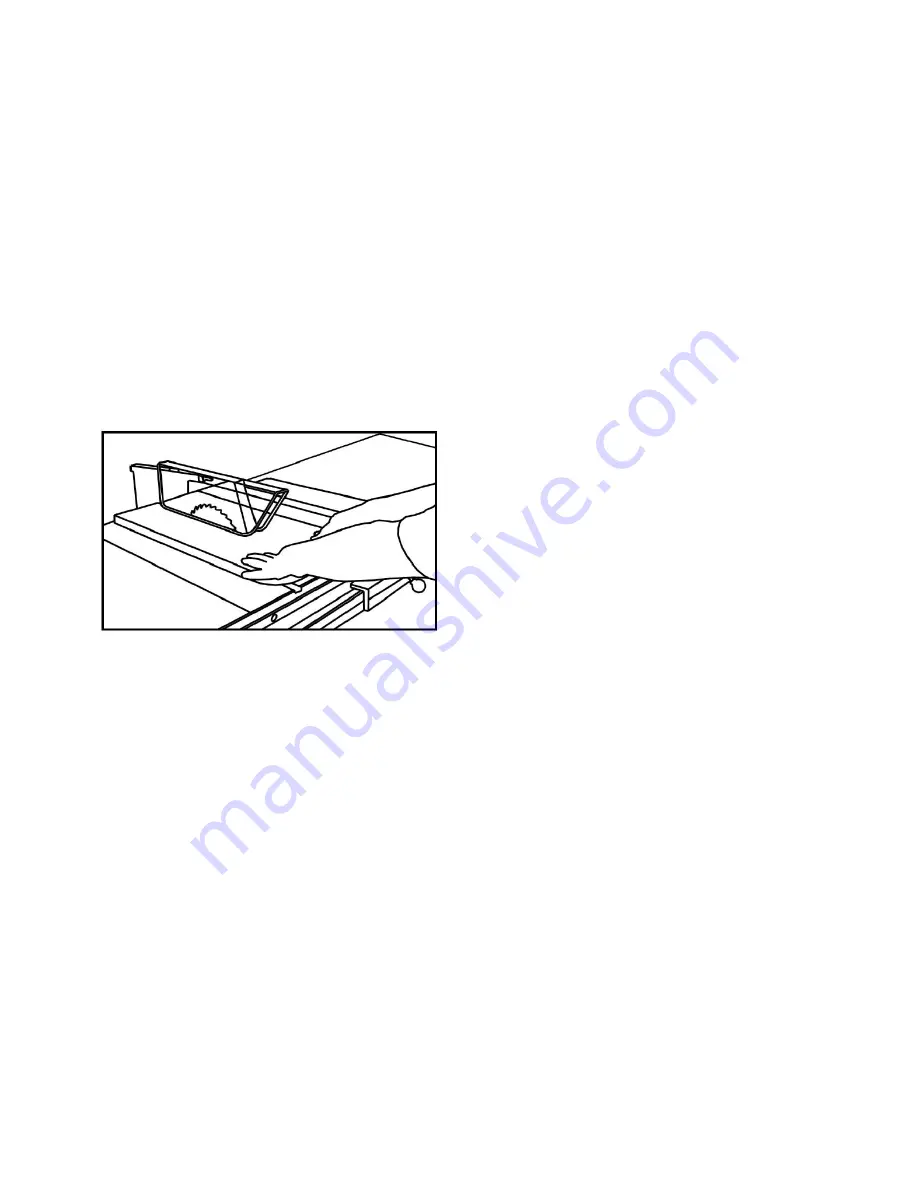
saw blade as shown in Fig. The work can then be
fed through the saw blade with one or two hands.
When this is done the work will either stay on the
table, tilt up slightly and be caught by the rear end
of the guard or slide off the table to the floor.
Alternately, the feed can continue to the end of the
table, after which the work is lifted and brought
back along the outside edge of the fence. The
waste stock remains on the table and is not
touched with the hands until the saw is stopped
unless it is a large piece allowing safe removal.
Fig.31
8. Maintenance
This table saw requires very little maintenance
other than minor lubrication and cleaning. The
following sections detail what will need to be done
in order to assure continued operation of your saw.
LUBRICATION
The table saw has sealed lubricated bearings in
the motor housing and the arbor assembly, they
will not require any additional lubrication. Use a
wire brush to clean off the worm gears and
trunnions and apply a white lithium grease to keep
them lubricated
CLEANING
Cleaning the Model is relatively easy. Vacuum
excess wood chips and sawdust, and wipe off the
remaining dust with a dry cloth. If any resin has
built up, use a resin dissolving cleaner to remove it.
After cleaning, treat all unpainted cast iron and
steel with a non-staining lubricant.
Occasionally it will become necessary to clean the
internal parts with more than a vacuum. To do this,
remove the table top and clean the internal parts
with resin/pitch dissolver or mineral spirits and a
stiff wire brush or steel wool.
Make sure the internal workings are dry before
using the saw again, so that wood dust will not
accumulate. If any essential lubrication is removed
during cleaning, re-lubricate those areas.















































